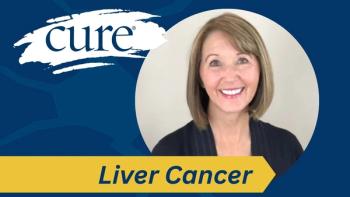
Changing Treatment Options Offer Next Advances in Chronic Lymphocytic Leukemia
Patients with relapsed or refractory chronic lymphocytic leukemia may have more options now than ever before, according to William G. Wierda, M.D., Ph.D.
Patients with relapsed or refractory chronic lymphocytic leukemia (CLL) may have more options now than ever before, according to William G. Wierda, M.D., Ph.D.
“There are lot of drugs that are novel and new that we are interested in developing, be it the next advance in CLL,” he added. “We’ve had a lot of advances in CLL, and now more than ever, we have a lot of opportunity for additional advances. We need to boost our referral and make sure the community knows we are working on clinical trials and drug development, and if there are patients who have relapsed or are refractory, then we need to see those patients.”
In an interview with CURE’s sister publication,
OncLive: What are the current treatment options for patients with relapsed or refractory CLL?
Weirda: Treatment options are changing these days so patients who have relapsed disease, their next treatment option depends on what they (were treated with) prior to progression. So, if we’re talking about front-line therapy or a first or second salvage (therapy), the treatment options will be determined by what they’ve had previously and what they are refractory to. So, if patients have had prior chemoimmunotherapy, then we have a couple of treatment options. We have (Imbruvica [ibrutinib]) monotherapy or (Venclexta [venetoclax]) and (Rituxan [rituximab]) as two treatment options.
They are different in that the approach is different, the treatment is different. Patients go on (Imbruvica) and remain on treatment until the treatment is no longer effective or they have some kind of toxicity. From the long-term follow-up data, with (Imbruvica) monotherapy in the relapsed setting, the media progression-free survival (time from treatment to disease progression or worsening) across all relapsed patients is about 51 months. So they have very good durable disease control with (Imbruvica) therapy. But they have to stay on treatment indefinitely. We do see some side effects from (Imbruvica).
The other strategy is with (Venclexta) plus (Rituxan), there was a randomized clinical trial looking at chemoimmunotherapy that showed improved progression-free survival for patients who relapsed with (Venclexta)-based therapy. So, that is another option that is different from (Imbruvica) monotherapy because we’re talking about fixed duration of treatment. Patients are treated with (Venclexta) for two years and then they stop, and (Rituxan) is given at the initiation of treatment.
Can you discuss the early data we’ve seen with chimeric antigen receptor (CAR)-T cell therapy in these patients?
The early data where CAR T (cells) were studied in patients with CLL, not in combination with any other treatment, had a lower complete remission rate than had been reported, for example, with (patients with acute lymphoblastic leukemia [ALL]). With ALL, the reported complete remission rate is about 80 percent, and in CLL it is about 30 percent looking just at CAR-T cell (therapy).
There is a lot of data (from UPenn) in terms of looking at the CAR-T product and the CAR-T potency of that product in patients with CLL. What they found was there was a higher potency in the product when they collected the T cells from patients when they were on (Imbruvica). So, (Imbruvica) has some immune-modulating effects. Also, those CAR-T cells work better with the presence of (Imbruvica). So, the current strategy is looking at (Imbruvica) in combination with CAR-T (cell therapy). There is a suggestion there is better activity, better tolerability even, with that combination, but we need to treat more patients.
What is the take home message from all of this?
The take home message is that the response rates and the depth of remission are better now than they ever were in terms of front-line therapy and relapsed treatment. Now is the time we are working toward fixed duration treatment, getting patients in a good deep remission with nonchemotherapy-based treatment, so with a molecule inhibitor-based treatment, and giving patients a treatment-free period. We will have more ideas about what relapse and refractory disease looks like as we treat more patients on these studies.




